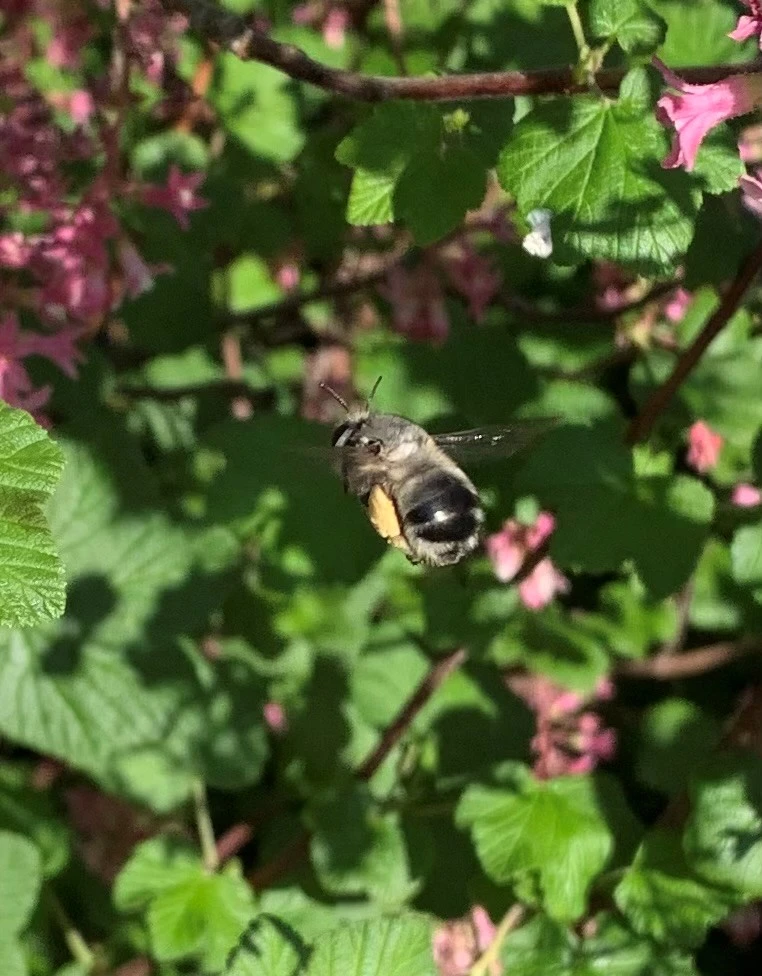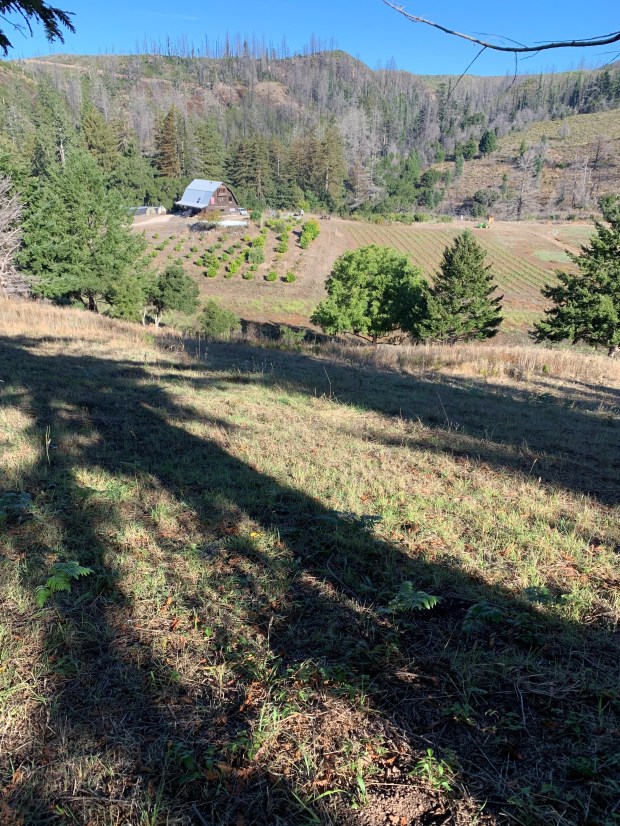This is the hardest-work season for the farm. Everything needs doing, and it needs doing all at once: mowing, tilling, planting, pruning, burning, weeding. It’s a race. We’re racing to keep the fields mowed before the birds invest in nests amongst the tall, inviting cover crops. A tractor changes from a purr to a rattle or a high screaming whine: oops! It broke. Backup tractors and backup tools come out- there’s not time to fix things! We chase the weeds and cover crops, tractor-chopping them into little pieces before they set seed.
New Farmer!
Its Bodhi Grace’s first year actively farming at Molino Creek Farm as he takes the helm of the big fading orange, old Kubota tractor: back and forth, back and forth. We manage to have two generations as members of the Collective: what a celebration! Go Bodhi! His infectious smile cheers us all. Good posture on the tractor seat, he rocks out with music through headphones that somehow manage above the din of the tractor mowing. For the first time, the tractor has a big colorful umbrella for shade.
Drying, Tilling
The fields are nearly mowed, but still things resprout until the soil gets turned. We poke at the ground to make sure its not too wet to till as we don’t want to compact the soil and we don’t want the drag behind disc to churn up big mud clumps. A couple of weeks of dry warmth and already the mower throws up a few puffs of pale brown dust from the shallow-soiled portion of a field.
Birdsong
Spring’s bird songs have flourish, notes elongated and fancier than wintertime conversational peeps. The first male barn swallows returned last Saturday night, greatly changing both the soundscape and the visual show. Now, fence posts and rooflines emit the swallows’ metallic squeaks and burbling. Crisscrossing the sky, jetting swallow silhouettes grab attention mostly because of the absence of many months. The swallow women were weeks behind the guys last spring; I’ll count this time.
Bluebird’s flashy blues and finch’s purple reds are especially vibrant with breeding plumage. Beaks agape, heads thrown back, song sparrows furiously belt out long and complex solos from atop the tallest white-flowering radishes. Are they proclaiming nesting territory, or are they just celebrating the longer days and the finally warm sun? It has been a long, wet, cool, blustery winter. The unusually poor weather undoubtedly claimed lives.
Late Winter Harvest
Even this time of year, there’s a harvest going on: citrus! Each day presents a few more ripe fruit from the 250 pound harvest of seedless, somewhat surprisingly sweet Persian limes. These limes are yellow-when-ripe, and that is surprising to many. We’ll first distribute to the Community Orchardists and then to Two Dog Farm, who take them to market or to their chef who jars delicious lime marmalade.
Oranges, too, are coming ripe. Navels, Velencias, day by day a little sweeter, a little more juicy.
Sun to Rain
The week’s dry heatwave will break the day after tomorrow and the world will transform for many days to clouds and drip. Mist will blow across the fresh-mowed fields and showers will soak the already thirsting ground. Puddles will fill for already longed-for bird baths, and the newts will march once more, moving towards creek or grassy tunnel system.
Bees
Petals close and nectar slows with cooler, cloudy weather. Bumble bees will be hungry. Flowering patches and warm days create quite a buzz. I’m a newfound bee watcher and notice a new bee every few days; today, it was loudly buzzing, honeybee-sized, gray, furry bees… shy and furtive, and very fast. The first bees of spring are still around- giant bumblebees either gracefully bopping between flowers or klutzily fumbling in the grass, seeking burrows for raising brood.
We hope you enjoy the emerging spring.
-this post simultaneously made on Molino Creek Farm’s website

































